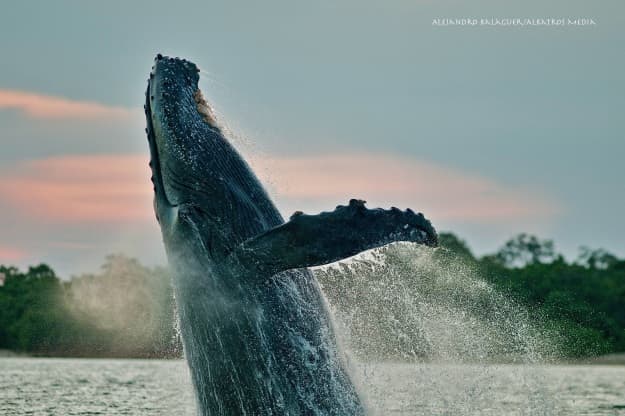The conservation of the environment, especially the marine environment, has been closely linked to the conservation of whales. The ocean giants have become one of the most important ambassadors to help raise awareness of how vital it is to protect natural resources.
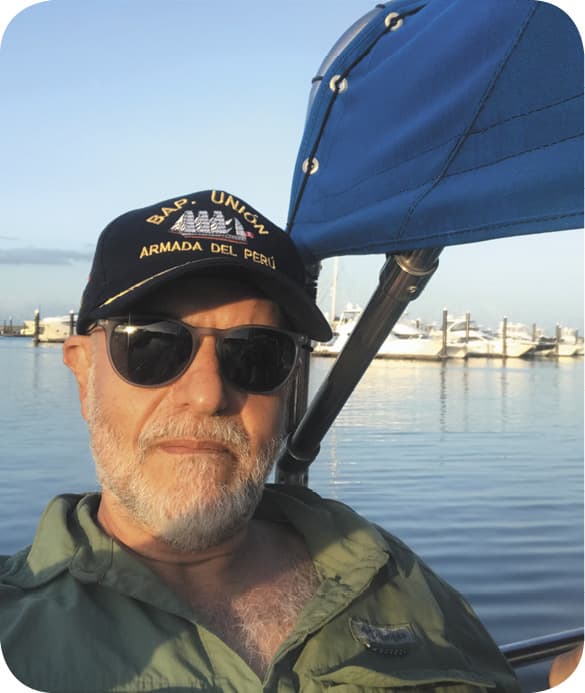
Our country has been blessed with an abundance of nature both on land and in our seas, allowing thousands of whales that come between the months of July and October to give birth to their young. The journalist, photographer, documentary maker and Executive Director of Albatros Media, Alejandro Balaguer, tells The Visitor that there is a reason why Panama is chosen by these mammals, and it is because of the cluster of islands with shallow inlets that exist throughout the Pacific , the ideal place for the mother whale to teach her calf how to survive in the seas.
For this reason, Panama is the best place to watch whales in the world. Balaguer was so emphatic when considered how the country can position itself on this issue before the world. And with good reasons he says it, since our country has a large number of places to carry out this activity such as: The Pearl Archipelago, Pedasi, Gulf of Montijo, Coiba Marine Park, Gulf of Chiriqui and the Bay of Panama (a few kilometers from Panama City).
Beauty Changes the World
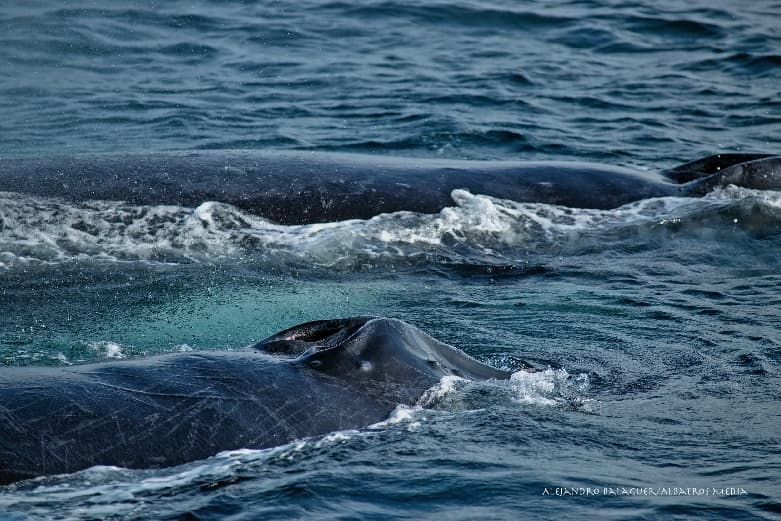
Alejandro Balaguer comments with certainty, “people are struck when they are told a tragic story of whales, but when there is a whale jump in front of the bow of the boat… you have an ally for conservation forever”. This is the premise when asked about how to make society aware of the protection of this marine species vital to our life. The idea of this journalist and documentary filmmaker that the more you know about something, the more it is loved and protected, is true. The more people can see the wonder that these animals are, the more they will want to know not only about the whales but about the entire environment that surrounds them.
Allies of the Environment
“Did you know that 75% of the carbon dioxide in the atmosphere is not trapped by forests, but by the oceans?”. A direct question that Balaguer asks, and with good reason, here he explains that the largest carbon dioxide collector in the ocean is phytoplankton. The whales feed on this microorganism and when they defecate in the sea (which are tons), this fertilization helps to capture the carbon dioxide that is being generated. Studies indicate that a whale can absorb more than 33 tons of CO2 throughout its life. Another reason of the many more, that there are to protect these marine beings.
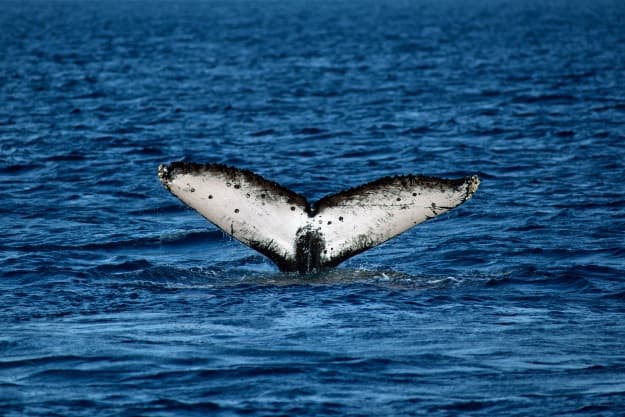
16 Million Tourists Travel to Watch Whales
This is the figure that Balaguer shares with us when we talk about the importance that should be given to this type of tourism, one that touches the heart and the imagination in many ways. He also emphasizes that it is not only for conservation but because this tourism generates a billion and a half direct dollars worldwide. Panama, being the best destination to observe them, has to prepare before really promoting it, since the null or little organization, can push these giants to stop visiting us, as happened at Malaga Bay, Colombia. The negative economic and ecological effects can take years before they return again.
Balaguer recommends organizing and getting certified, that way the sightings in Pedasi, Gulf of Chiriqui, Las Perlas Archipelago and Gulf of Montijo can develop and generate economic growth. By having fishermen and locals as allies, it will make it easier for them to take care of their natural resources. The journalist concludes by saying that in Argentina, there is a very small town that generates 80 million dollars a year just from whale watching.
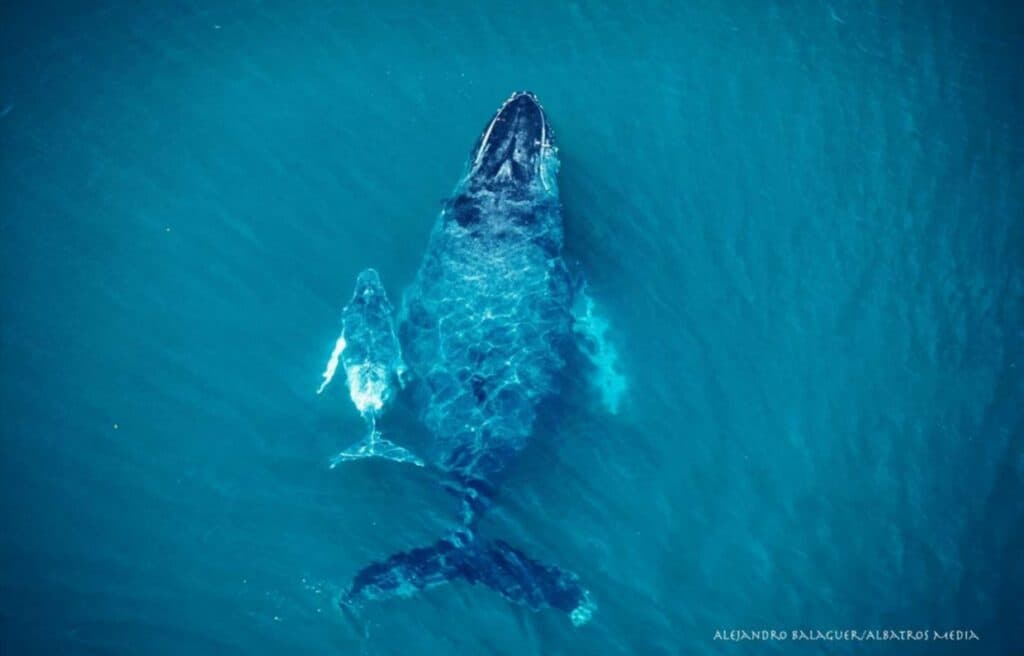
Museum and Training Center of Whales and the Sea
Balaguer thinks that apart from training, one must also surprise, and in tourism both are important for the experience to be the best. One project that the journalist has been working on is a Museum, with a training center for the sea and whales at Saboga island, in las Perlas Archipelago. A Project that would train and educate the new generations, relating all inhabitants of the island with this subject matter and generating economic income, to a place that in the present day has economic and social problems.
The Whales bring us closer to nature, they impact us in a positive way and the best thing is that they love Panama so much that they arrive a few kilometers from our capital city. For this and many more reasons for Balaguer, and the entire tourist community, Panama is the best place for whale watching in the world.
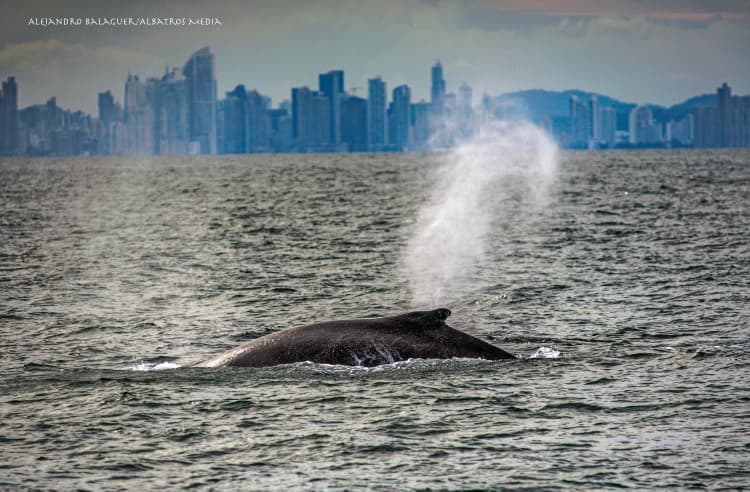
Photos courtesy: Alejandro Balaguer – Albatros Media


